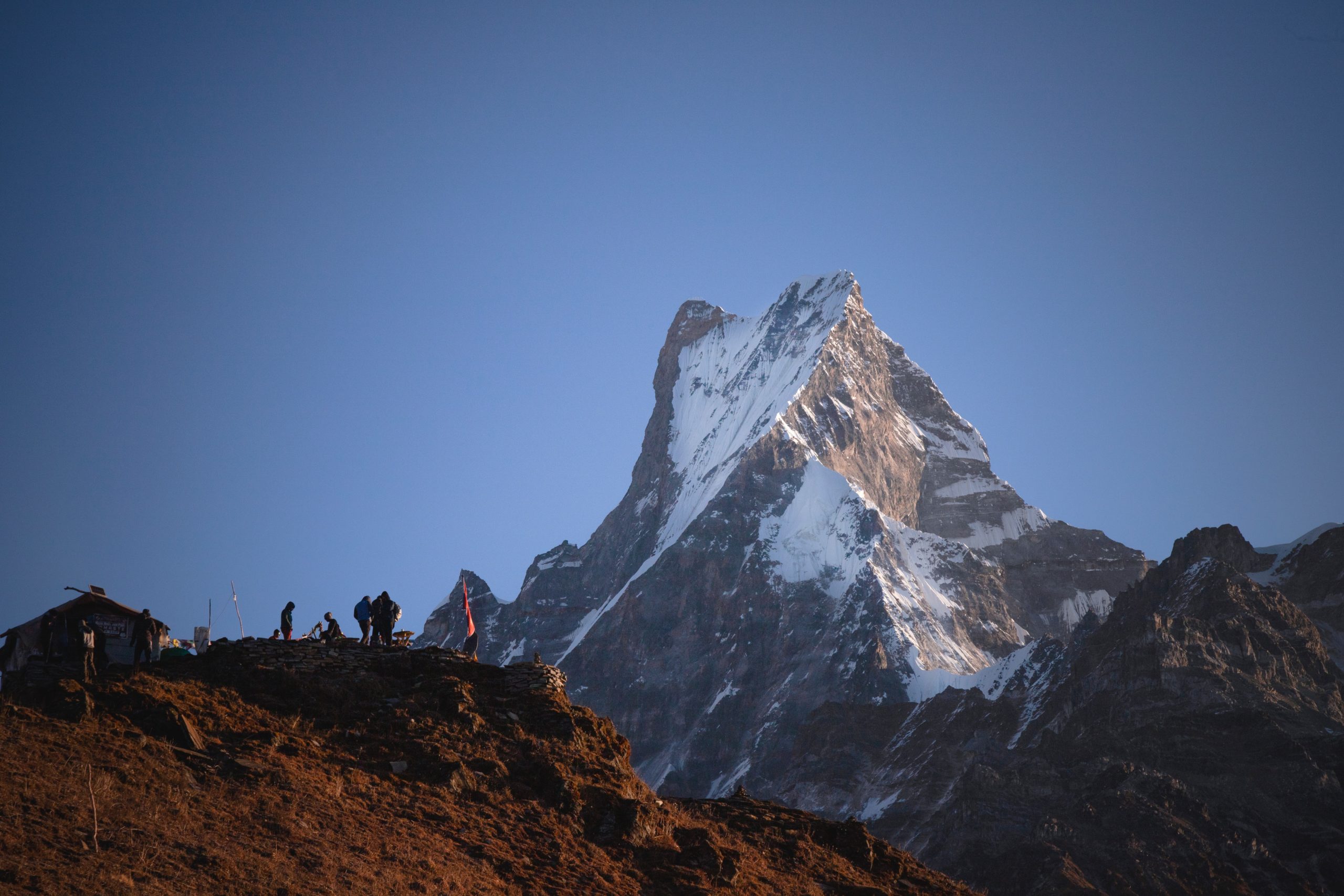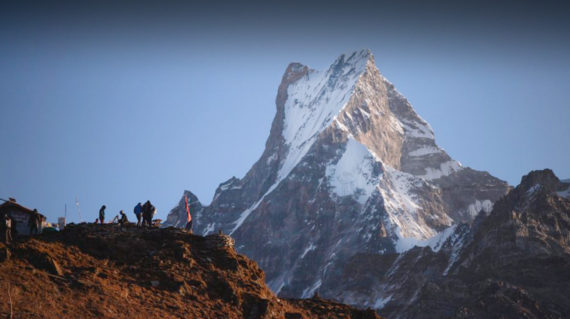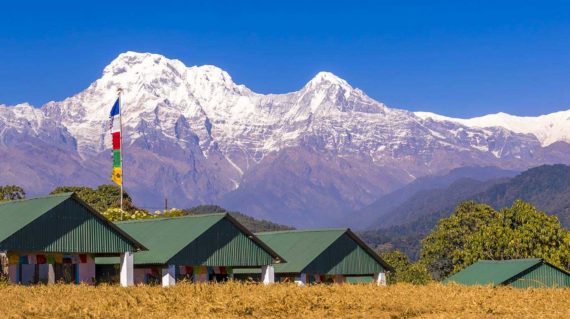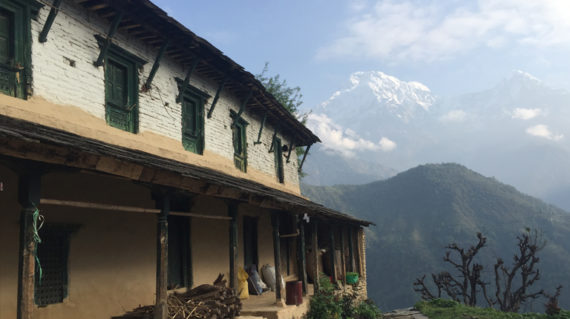
The Magnificent Mardi Himal Trek
fromMardi Himal Trek, which is located east of the most popular Annapurna Base Camp trekking and near the newly opened Kori trek, is one of Nepal’s most difficult yet humbling trek. We will be treated to beautiful landscapes and genuine joys as we travel through the trek. Depending on the nearest trekking base camp, this expedition could take anywhere from 4 to 6 days to complete.
The Mardi Himal Trek is a side path off of the Annapurna Base Camp Trek. It is a little tougher, a little more interesting for most people, but most importantly, it is much less crowded than other Annapurna Region treks. The Mardi Himal Trek provides spectacular views of the Annapurna Massif’s lesser-known aspects.
The goal is to reach the Mardi Himal View Point, which is at 5,587 meters. There weren’t many teahouses on this trek at first, but since roughly 2011, there has been a surge of teahouses from the beginning to the Mardi Himal Base Camp.
With spectacular views of snow-capped peaks including Annapurna South (7219m), Machhapuchhre (6993m), Annapurna I (8,091m), Annapurna South (7,219m), Him Chuli (6,441m), Mardi Himal (5,553m), Annapurna III (7555m), Gangapurna (7,454m), Dhaulagiri (8167m), and others, Mardi Himal Trek is an eye pleasure as much as it is refreshing for our body.
This trip ascends to a maximum elevation of roughly 3,300 meters through a rhododendron forest on limited pathways. As we climb, the terrain changes to craggy high mountains, providing a spectacular perspective of Machhapuchhre Himal, commonly known as Mount Fishtail.
This route, like a Poon hill trek, is one of the best ways to avoid crowds because it takes us down jungle trails where we may see wildlife and birds like the Himalayan Thar, long-tailed langurs (monkeys), and butterflies like the Danphe, Kalij, and Monal.
The Mardi Himal Trek is a small package that has everything that will enrich our lives.
The months of September to November (fall) and March to May (spring) are the most popular and suited for the Mardi Himal Trek.
Autumn trekkers do not have to worry about monsoon rain or the biting cold of winter because it is both post-monsoon and pre-winter. The temperature rises during the day and drops in the mornings and evenings. The sky remains bright throughout the day, providing beautiful views of the Annapurna range. The average temperature during daylight hours is 12 to 20 degrees Celsius.
Spring is hot during the day and cools in the morning and evening. The days will be warmer than in the winter because it is the pre-monsoon/summer season. Temperatures range from 16 to 22 degrees Celsius. It’s also a flowering season, so the trails will be vivid and colorful. Rhododendron blossoms grow all over the place, turning the woods a beautiful shade of green.
The enormous volume of hikers from all over the world is the one downside of trekking during these two seasons.
Talking about difficulty, the Mardi Himal Trek can be demanding. Although it is not difficult, we should be in good physical condition. After all, we’re still traveling through Nepal’s Himalayas, which are recognized for their awe-inspiring beauty.
There is no direct climbing involved in this trek. Crossing the rocky parts around high camp and base camp will be the most difficult part of the hike. Because the greatest altitude will be around 3,300 meters, altitude sickness may not be a concern. Similarly, we must be psychologically prepared to walk 4-7 hours every day for the duration of the hike, as it will become exhausting.
For the course of the trip, we’ll be staying at basic teahouses in several communities along the road.
-
Reviews 0 Reviews0/5
-
Vacation Style Holiday Type
-
Activity Level Challenging
-
Group Size Small Group
The Mardi Himal Trek is a small package that has everything that will enrich our lives. The months of September to November (fall) and March to May (spring) are the most popular and suited for the Mardi Himal Trek.
Autumn trekkers do not have to worry about monsoon rain or the biting cold of winter because it is both post-monsoon and pre-winter. The temperature rises during the day and drops in the mornings and evenings. The sky remains bright throughout the day, providing beautiful views of the Annapurna range. The average temperature during daylight hours is 12 to 20 degrees Celsius.
Spring is hot during the day and cools in the morning and evening. The days will be warmer than in the winter because it is the pre-monsoon/summer season. Temperatures range from 16 to 22 degrees Celsius. It’s also a flowering season, so the trails will be vivid and colorful. Rhododendron blossoms grow all over the place, turning the woods a beautiful shade of green.
Talking about difficulty, the Mardi Himal Trek can be demanding. Although it is not difficult, we should be in good physical condition. After all, we’re still traveling through Nepal’s Himalayas, which are recognized for their awe-inspiring beauty.
There is no direct climbing involved in this trek. Crossing the rocky parts around high camp and base camp will be the most difficult part of the hike. Because the greatest altitude will be around 3,300 meters, altitude sickness may not be a concern. Similarly, we must be psychologically prepared to walk 4-7 hours every day for the duration of the hike, as it will become exhausting.For the course of the trip, we’ll be staying at basic teahouses in several communities along the road.
Trekking Highlights:
- Enjoy the rising sun from the Mardi Himal viewpoint (5,587m).
- Explore abundant flora and fauna alongside gorgeous sceneries spread throughout the trail.
- Experience the rich tradition and culture of different communities like the Gurungs, and Magars by staying at their homestay facilities.
- Witness picturesque villages, lush green hills, beautiful forests of oak & rhododendron, lovely lakes, cascading waterfalls, and fine valleys.
- Relish the panoramic views of the Annapurna range, Mt. Machhapuchhre, Mt. Manaslu, Mt. Hiunchuli, Mardi Himal, Mt. Dhaulagiri, and many other mountains.
Why trek with us?
Quality:
We are assured that the trip highlights would have made you tempted to trail the Mardi Himal, and, with us, we can add flair to it. For us, quality isn’t just about luxury but a sense of interconnectedness with society. We can guarantee you this interconnectedness. We design our trek in such a way that you won’t just be walking through the trail but making memories with us and the locality. We will interact with the locals, take pictures, have food with them, and make ourselves home.
Giving back to the community:
We are a product of the Nepalese community, and as such, with each trip we do, we plan some sort of activity to guarantee that the locals benefit fully.
We will either contribute books, or stationery supplies to schools along our Mardi Himal Trek routes. Similarly, while in Pokhara, we can contribute clothes and other stuff to the Tibetan refugee camp while purchasing local arts and crafts. This will also allow us to connect to the refugees and make them feel at home while we would be evolving into elite explorers ourselves.
We believe in honesty and openness, so we won’t just make promises and then sit back. We will mobilize volunteers to donate the gathered things while on the Mardi Himal trek, and we will visit these locations and lend a hand to mobilize the resources we would have contributed. Similarly, we would be directly contributing to the community’s well-being by participating in at least one of the activities that the locals on the routes that lead us to Mardi Himal would be performing – such as purchasing their crafts or taking paid classes to learn to make those crafts.
- Pick up and transfer to the booked accommodation by Elite Explorer representative from Tribhuwan International Airport Kathmandu. (please look for your full name card outside the arrival hall, +977 985 115 5251 arrival assistance WhatsApp call or message)
- Twin sharing or double bed accommodation with buffet breakfast in Kathmandu and Pokhara.
- Guided, know your surrounding tour in Kathmandu.
- Private vehicle for ground transport in Kathmandu.
- Kathmandu to Pokhara 30miutes domestic flight
- Pokhara Phedi Private vehicle drive.
- Guided trek by our expert and experienced English-speaking trekking guide. (language guide can be arranged based on your preference.)
- A porter to help carry our trekking bags (trekking bags must not exceed 20 kg, 2 pax combined )
- Locally available breakfast, lunch, and dinner including tea or coffee.
- Basic Mountain Lodges (famously known as tea houses) for accommodation.
- Guide Porter salary remunerations and insurance
- Trekkers Information Management System (TIMS) card
- Necessary documentation and Mardi Himal trekking permit.
- First aid kit including oxygen meter
- Sarangkotl to Pokhara ground transportation by a private vehicle.
- Pokhara Kathmandu thirty minutes domestic flight.
- Government tax
- Airport transfer upon completion of the program
- Client personal expenses and bar bill including soft drinks
- Natural Calamities beyond our control and expenses incurred in such rescue services.
- Travel/Medical Insurance
- Lunch dinner in Kathmandu and Pokhara
- Day 01 Arrival in Kathmandu (1400 meters); transfer to a centrally located hotel
- Day 02 Trek Preparation and a short walking tour to the local market of Kathmandu
- Day 03 Fly from Kathmandu to Pokhara (820m/2,690ft); 6-7 hours by road, 30 minutes by air
- Day 04 Drive to Kande (1,770m) from Pokhara(1 hour), and trek to Pothana (1890 m), approx 4 hours
- Day 05 Pothana to Forest Camp (2600m), 5-6 hours of walk
- Day 06 Forest Camp to Low Camp (3000m), 5 hours
- Day 07 Low Camp to High Camp (3580m), 4 hours
- Day 08 High Camp to Mardi Himal View Point (5,587) to High Camp, 7 to 8 hours
- Day 09 High Camp to Siding Village, 4-5 hours
- Day 10 Siding to Lwang Ghalel, 4 hours
- Day 11 Lwang Ghalel to Australian Camp (2060m), 4-5 hours
- Day 12 Australian Camp to Sarangkot (1519m), 4 hours
- Day 13 Sarangkot to Pokhara free day, 3 hours
- Day 14 Pokhara Kathmandu by domestic flight or private vehicle- Evening last-minute shopping in Thamel
- Day 15 Departure
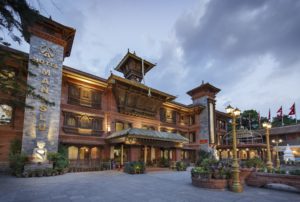
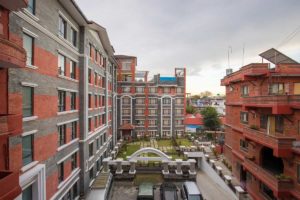
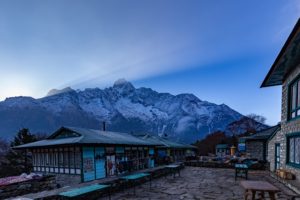
How many hours do we trek each day?
We will trek for six hours on average, but depending on the region you trek in, you might go for nine hours straight, including breaks for meals.
What transportation will it be to the trekking starting point?
Depending on the trekking region, either private transportation or air travel will be used.
Can I leave the things behind before heading for trekking?
Yes, we’ll tag your bag and keep it at your accommodation until you get back. Likewise, you should travel as lightly as possible when trekking.
Is it very cold in Kathmandu on my arrival?
There are four seasons and 300 days of sunshine in Nepal. As a result, Kathmandu’s lowest recorded temperature is -3 degrees Celsius, or 26.6 degrees Fahrenheit. However, while trekking, the temperature may drop to -13 degrees Fahrenheit or -25 degrees Celsius. For more details on what to pack and bring please contact your dedicated travel consultant or you can also contact us via E-mail.
Do I need to be extra careful of altitude sickness?
Our itineraries are made to give you plenty of time for acclimatization, reducing the likelihood that you will have altitude sickness. Every evening before or after dinner, our extremely knowledgeable guide will give us a briefing for the following day’s trekking, including instructions to prevent altitude sickness over 3500 meters. You must notify our guide right away if you have shortness of breath, headache, exhaustion, nausea, vomiting, a rapid heartbeat, or insomnia since altitude sickness can be fatal.
How many kg of bag pack am I allowed to carry?
The greatest option is usually to trek light. The best-recommended backpack weight is 10 kg for trekking bags and 5 kg for carry-on luggage because one must also include basics. (It also serves as the flight to Lukla’s weight restriction.)
Will there be a porter to carry my bag pack apart from the guide?
Yes, a porter will assist you in carrying the trekking backpack packs.
Can you tell me about the food in the mountains?
Most of the food is freshly prepared, but meats may have been stored for a while. Freshly prepared Daal and Bhat, a staple of traditional Nepali cuisine, are the finest.
How basic are tea houses, can I shower every day?
A basic bed, private or shared bathrooms, cold water in the absence of electricity or sunlight, charging the wifi battery, and the absence of a room heater. This is how simple tea houses seem. Further, during the cold winter, the water freezes in the pipe leaving no running water.As mentioned earlier, having a hot shower (or bucket full of hot water) is feasible in most tea houses, however, if unfavorable circumstances like an electricity cut-off occur, you may have to wait to take a hot shower.
Is there wifi or cellular signals in the mountains?
In the tea houses along the trails, there is wifi, however, the signal strength and speed may not be as advertised. On request, Team Elite Explorer will provide you with a local sim card for data subscription.
How about power, will there be charging points?
There will, in fact, be charging ports. Be considerate when charging your electronics as tea houses provide shelter for other hikers as well.
In case of medical issues, how will I get assistance?
Our guide will evaluate the case according to its seriousness, seek advice from the office as necessary, and then decide on the spot whether to transport the patient to the nearest medical facilities or call for help. When trekking in Nepal, kindly make sure to have comprehensive travel medical insurance.
Can 3 years and 80 plus age trek in the mountains?
Every age group can find the ideal trekking trails in Nepal. So every one of any age can hike in the mountains. When working with infants and the elderly, we take extra precautions both in the planning of the itineraries and on the ground.
Lastly, how fit should I be for trekking?
For the trek, you need to be both physically and mentally prepared. The outcome of your adventure entirely rests on you. We advise selecting the trekking routes based on your degree of fitness. There is little doubt that shorter routes are simpler than longer ones. A higher level of fitness will be needed for the longer treks. So, try to be in top physical shape.
.


